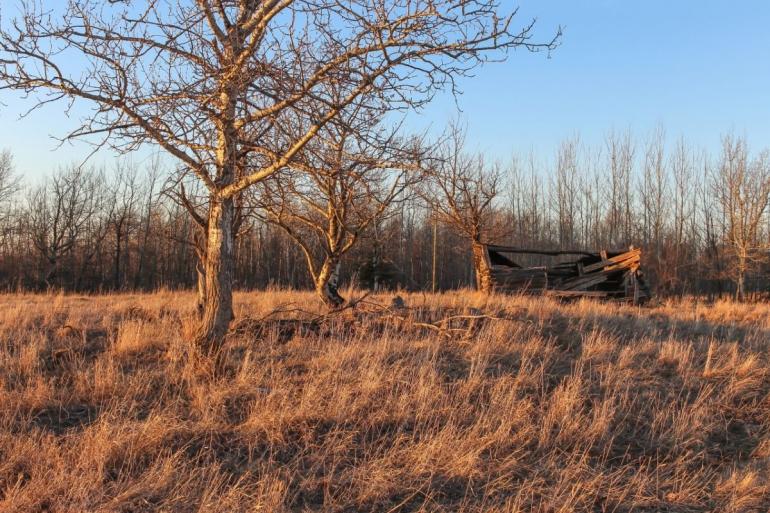Women of the Wind


Women of the Wind: a Homesteader in Eastern Montana
By Robyn Erlenbush
How did one cope with loneliness, personal loss, despair, and near financial ruin during the Great Depression, then followed by a decade of drought? Pioneer women of the eastern Montana prairie never dreamed that their journey West in search of a homestead would yield a series of trying and tragic events, with the only constant being the unrelenting wind of the prairies. Their stories are part of the great westward migration, over 150 years ago, under the Homestead Act, which offered 160 acres of “free land” to anyone who was age 21 or older, who could live on the land for five years, and pay a $10 filing fee.
The original act, signed by Abraham Lincoln, allowed the claiming of over 270 million acres (10% of the area of the United States) by the early 1900s. Homesteads were staked on fertile, highly productive, and irrigable land. The second “Enlargement” Act, passed in 1909, offered a greater incentive of 320 acres for less productive land, suitable for dryland farming. Claims in Montana, North and South Dakota occurred during this era. And in 1916, the Stock-Raising Homestead Act granted 640 acres per claim for ranching purposes. Montana, the nation’s largest destination of these pioneers, offered an acreage allotment of over 34% of the entire state, totaling over 150,000 homesteads on more than 32,000,000 acres.
There are many different reasons why these women settled. For men the need for a hard working wife to tend to the daily chores seemed essential for survival. However, some single women came in search of the adventure to build the American Dream, by owning their own homestead. Others came in hopes of a fresh start, running from personal woe, financial challenges, or boredom. Most women were not following their own personal dream, but that of their spouse or other family members.
What they found and endured was much different than the refined life they left behind. Most of the prime ground was already taken, so the rush for more remote marginal ground in 1910 caused many homestead failures because it was nearly impossible to make a living on only 320 acres of high prairie.
One such wanderer was Martha Haftle. She and her sister, Mary, along with their brother, Charlie and Mary’s husband Karl, relocated from Eureka, South Dakota, in 1910 and made their homestead claims 40 miles south of Baker, in southeast Montana. Mary’s husband, Karl Pleissner purchased the Fallon County Times, a local Baker newspaper in 1917. Karl traveled an 80-mile round-trip commute to his city job by horse every week from the family homestead.
Their living quarters, homestead shacks made from a railroad box car and supplemented with a series of lean-to structures, offered no running water, indoor plumbing, or electricity to deal with harsh, cold, and bitter winds. Coal or wood burning pot-bellied stoves were used for heating and cooking, blocks of ice for refrigeration, and kerosene lanterns for light.

Martha’s days were full of dawn to dusk chores. Everything was precious, from rain water captured in barrels for the washing of clothes to the incubating and hatching of baby chicks for future poultry stock. Water, heated on a “Majestic Stove”, and sour dough starter formed the mainstay ingredients for pancakes and biscuits. Ice was carved each winter from deep holes in Beaver Creek and carried by sled several miles to storage sheds. This ice cutting was an annual neighbor event with the blocks stored in an ice house dug six to eight feet in the ground and covered with sawdust for insulation.
Martha married George Colbo in 1921 and moved to his homestead near the 101 Ranch, 20 miles closer to Baker. They had three children—Carol, John, and Bonnie. George became a Montana senator in 1934. He died at the age of 46 in 1936 from Typhus-Tularemia, a contagious and infectious disease. After George’s death, Martha delegated her daily tasks to her children. Educated as a school teacher, she had a keen sense for numbers and quickly realized that the homestead was destined to fail without a new direction.
As a widow, with limited funds for hired help, she started raising sheep. Martha knew there was a good market for wool to be sold for carpets and military uniforms. She researched different breeds and settled on Corriedales, known for their thick, high-quality long staple wool, docile dispositions, long life spans, and ability to survive on the dry open plains. The herd survived and grew; Martha started to acquire nearby half sections from financially troubled farmers.
Family tragedy struck in 1938, when at 15, Carol, Martha’s oldest child, lost her footing in the current of Boxelder Creek, and fell into a deep hole with a strong undercurrent and drowned, too. Chester Bailey dove in the water to try to rescue her, but Chester drowned, too. Four years later, Martha’s son, John Henry, was killed at the age of 16 in an auto accident.
Martha didn’t recover from the loss of her children but immersed herself into her rigorous workload and daily routine. She increased her sheep herd to several thousand head and continued to acquire surrounding acreages, which she leased to neighboring farmers. At her passing in the mid 1950s, she had amassed more than 7,000 acres of ranch land and farm ground. Her qualities of tenacity, enduring faith and unwavering work ethic serve as a role model of the pioneering spirit.
Robyn L. Erlenbush, a three-generation Montanan, grew up on a cattle and sheep ranch near Baker. Her passions, aside from her active real estate career, include Montana history, writing, photography, gardening, and the study of golf. Robyn is the granddaughter of Martha Haftle Colbo. Erlenbush can be reached at [email protected]
Leave a Comment Here
Leave a Comment Here